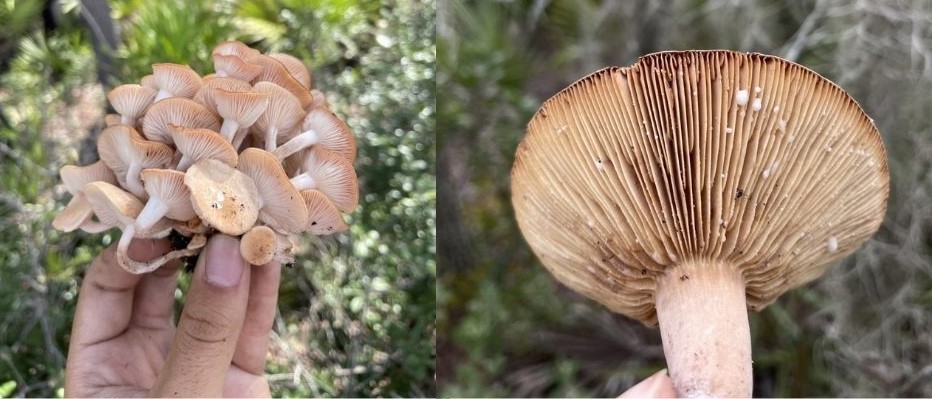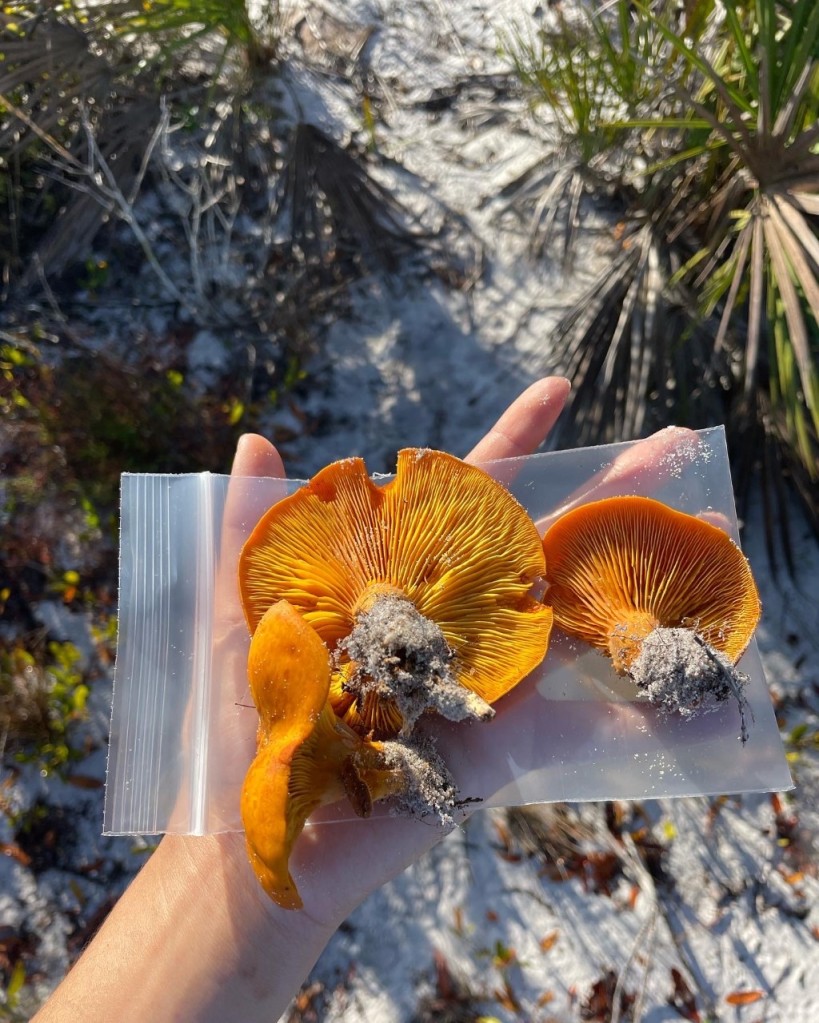
Author: Elan Tran
It may come as a surprise that fungi are integral parts of our natural environment and our industrialized society. In the natural world, fungi exchange nutrients with plants, breakdown organic matter, and act as a direct food source for many animals including humans. In our built ecosystem, fungi are used to derive medicine, create building materials, and develop food products including cheese, bread, and wine.
Elan Tran, a post-baccalaureate research intern in the Archbold Plant Ecology Program, has worked on the curation of the Station’s fungi for the past seven months. “I started studying fungi through their relationships with plants”, she explained. Elan continued, “Understanding both beneficial and pathogenic relationships is important to native plant conservation and agriculture. Since the start of my position, I have become fascinated with the fungal community at Archbold and in the surrounding area. Cataloging the species of fungi we find, the habitats they survive in, and nearby plants helps us to uncover how fungi may be contributing to the ecology of the scrub ecosystem.”
According to Dr. Aaron David, Archbold Plant Ecology Program Director, “The Lake Wales Ridge is such a special place for biodiversity, however, unlike the plants and animals, the fungi are largely unknown and undocumented here.”
Tran has spearheaded an expansion of Archbold’s fungal collections, known as a fungarium. The purpose of the fungarium is to collect, document, and preserve mushrooms on the Lake Wales Ridge. The high-quality specimens collected will be available for future scientists to view, borrow, and study. Importantly, Tran is sequencing the DNA of the specimens in collaboration with Professor of Mycology Dr. Matthew Smith at the University of Florida. She explained, “the purpose of obtaining DNA sequences is to verify the identity of the specimens we collect and to let us know if we have discovered any new species”. The DNA sequences are also stored in online databases, where researchers worldwide can use them.
Archbold’s fungarium currently has more than 130 specimens, though is expected to rapidly grow with the upcoming wet season. On average, mushrooms are made up of 90% water, which is why they thrive during the humid and moist weather of summer and fall. “We tend to see fewer mushrooms popping up during our dry winters than during the rainy season,” Tran commented. She went on to explain that different species of mushrooms, much like plants, have their preference for certain weather and soil conditions. “This really leads into how much variety there is in the fungal community at Archbold,” said Tran.
“We have found quite a few edible Honey Mushrooms, which belong to the genus Armillaria, as well as some very toxic species belonging to the genus Amanita,” Tran explained. She continued, “We also have some fun, colorful mushrooms like Chanterelles, which tend to be orangish-red, and Southern Jack O’lanterns, which have luminescent gills”. However, the collection doesn’t end there. In the brief time Tran has been collecting, the fungarium has received puffballs, jelly fungi, and specimens from the Lactarius group which produce liquid latex when cut.
Tran says, “we are just scratching the surface of what’s here and it’s likely that we will come across undescribed species as we continue curating the fungarium at Archbold. It has been an exciting process so far and I can’t wait to see what we find during the upcoming wet season.”

